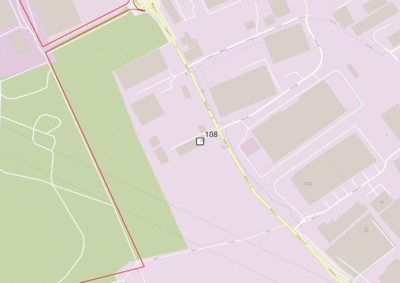Beddington Farmlands Landfill Site
| Beddington Farmlands Landfill Site | |
 See Non-Hazardous Landfill → page for a wider UK perspective. | |
| Waste Licence | VP3039SW (VP3039SW) |
| Operator | Valencia Waste |
Void
| Year | Total Void[1] |
|---|---|
| 2018 | 40322 |
| 2019 | 10000 |
| 2020 | 10000 |
Summary site information collated from a variety of sources
including: Monksleigh, Ellard Associates, EA, WasteDataFlow,
SEPA, NRW, DEFRA, BEIS and owner and developer websites
Summary
The site was developed by Thames Waste Management from the early 1990s onwards. Thames Waste Management were acquired by Viridor in 2004 and were renamed Viridor Waste (Thames) Limited thereafter. The site comprises a modern landfill engineered to Landfill DIrective standards.
History
Beddington landfill was developed by Than=mes Waste Management in the mid-1990s. It is located to the 2 km to the west of Croydon
The previous use of the site was as a sewage farm associated with the adjoining sewage treatment plant. Sewage farms comprise areas of land used to process and treat sewage sludge to manufacture a soil fertiliser product. They were more commonly used in the 19th and early 20th century than they are nowadays.
Planning permission for mineral extraction and restoration by landfilling was granted in 1995 on appeal, site works commenced in 1998. This planning permission envisaged completion of landfilling by 2015. A subsequent application sought to extend the life of the site until 2023.
The Waste Management Licence was changed to an Environmental Permit in 2003/4 as required by the changing legislation at the time.
The capacity at the site as originally granted Planning Permission was circa xxxx cubic metres; this was subsequently increased upon approval of a revised Landfill Surcharge Allowance and set of Landfill Settlement Contours to around yyy cubic metres.
Geology
The site is underlain by Quaternary-aged sands and gravels of the Hackney Gravel Member. These deposits are underalin by the London Clay Formation, which succesively is underlain by the Lambeth Group (sands, silts and clays), the Thanet Sand Formation and the Upper Chalk. The latter two are classified as Principal Aquifer, whilst the Lambeth Group is considered to be in hydraulic continuity with these.
Mineral extraction at the site was principally the sands and gravels of the Hackney Gravel Member. In addition, clays of the London Clay were worked to provide engineering materials at the site.
Engineering and Environmental Controls
The morphology of the site is a shallow landfill over most of the site area, with significant proportion of the void derived from landraise superimposed on the landfill.
The landfill is constructed as a Containment Facility, utilizing the underlying clay materials as the principal barrier. The landfill lining system is augmented with a flexible membrane liner of High Density Polyethylene (HDPE) on the base and the sidewalls.
There is Landfill Gas power generation with electricity export to the National Grid. Installed capacity is 5.05W. [1]
Viridor discharge leachate to the local sewerage system which discharges to the adjoing sewage tretament works. In 2019, it was proposed to install a methane stripping plant to pre-treat the leachate prior to discharge.
Other Infrastructure Elsewhere within the site complex, Viridor have also developed several other waste processing facilities, including a waste transfer station, a skip waste MRF, an In-vessel Composting (IVC) facility and an Energy-from-Waste facility. Several of these facilities are associated with contracts with the South London Waste Partnership.
Title
Tonnage Handled
Only Waste Codes receiving over 5,000t are shown.
Waste Tonnage, EWC List
The table shows a list of the Waste for the Permit VP3039SW, that has arrived into sites as reported to the Regulator and then publicised in their reported statistics. The Data was last updated in Oct-24. The total reported tonnage arriving at the site was: 166,600t.
| EWC Code | Description | Tonnes In |
|---|---|---|
| 17 05 04 | soil and stones other than those mentioned in 17 05 03 | 166600 |
References
- ↑ Units are in m3 for England and Wales, and Tonnes for Scotland.
